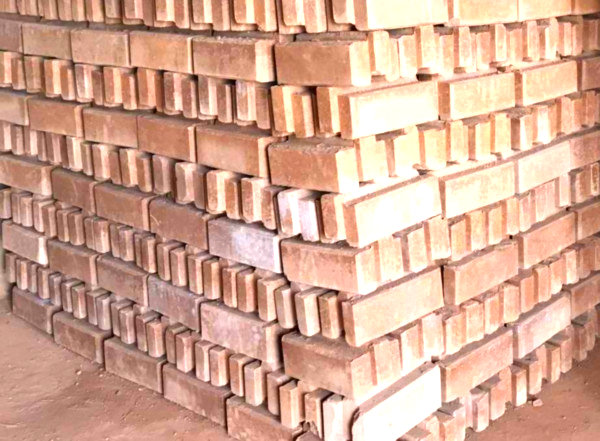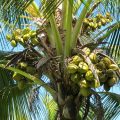In view of the rising cost of cement, the Forest Products Research and Development Institute made an attempt to form building blocks out of soil and water alone or in combination with one or two other agri-forestry waste materials, such as rice hull, coconut coir dust and wood ash. Lime is used as a binder. Lime is found in large quantities in Rizal, Negros Occidental and Davao Oriental. Coconut coir and other materials are available almost nationwide

Cementless Soil Blocks
Materials:
Lime
Coconut coir
Rice hull
Soil
Sand
Wood ash
Rice hull ash
Equipment:
1/4 inch mesh screen
mold
shovel
Procedure:
1. Pulverize the soil and remove larger pieces with the use of a 1/4 inch wire mesh screen
2. Mix together soil and any one or two of the agri-forestry wastes. Suggested combinations (in parts by volume) are:
a. 3 soil + 1 coconut coir
b. 3 soil + 1 rice hull
c. 5 soil + 1 lime
d. 5 soil + 1/2 lime + 1/2 rice hull ash
e. 5 soil + 1/2 lime + 1/2 wood ash
f. 4 soil + 1 rice hull + 1 lime
g. 21/2 soil + 21/2 sand + 1/2 lime + 1/2 wood ash
3. Form a hill out of the dry mixture (or of soil alone if a pure soil block is to be made) with a crater on top and add water.
4. Pour water slowly and with a shovel, mix the materials until a paste is formed. The paste should neither be too dry nor too wet so that during the molding process. The ingredients are wet enough to stay packed but not too wet. to produce slump when the product is removed from the mold. The right mixture can be learned easily by experience.
5. Fill the mold with the mixture. Tamp very well and level off. Apply pressure using a manually-operated molding machine or a similar device.
6. Dry the block in the shade for a few days and then sun dry for another few days.
Source: Forest Products Research and Development, Institute (DOST) College Laguna







Can the resulting brick of this process be baked in a kiln (kiln baking similar to the ones used in making the Ilocano burnay or clay pots) to make a stronger product and shorten the maturing process without unduly compromising the product’s integrity and structural strength?